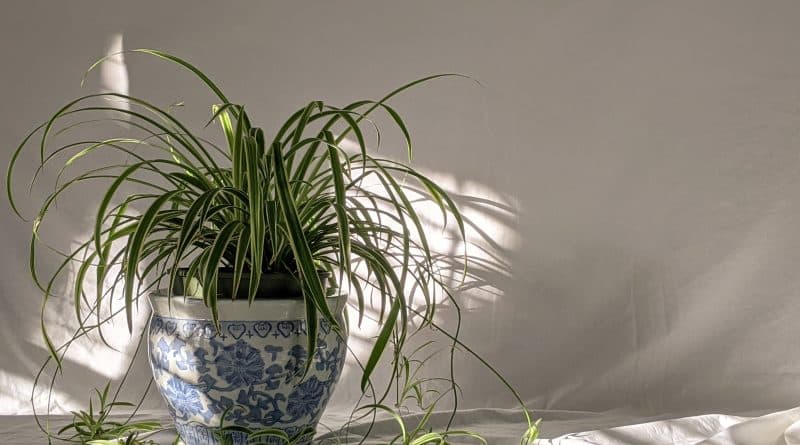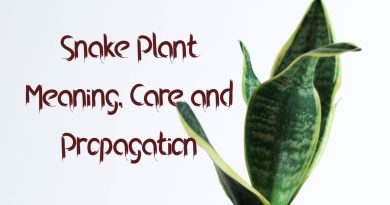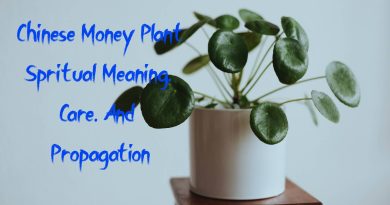Spider Plant: Meaning, Care, Propagation and Health Benefits
Spider Plant
Spider plant also called ribbon plant ( Botanical name: Chlorophytum comosum) of the asparagus family is widely used as tropical and indoor or household plants. It is native to tropical and southern Africa. It has long, narrow, green leaves with white flower clusters.
It is one of the easiest plants to care for and also one of the moderately fast-growing plants that can be planted at any time as long as they are not exposed to frost. The spider plant is so named because of its spider-like plants, or spiderettes, which dangle down from the mother plant like spiders on a web. It has long, narrow leaves growing in rosettes that drape over the edge of the pot and produce plantlets that can be rooted.
Spiritual Symbol of Spider Plant
The spider plant symbolizes good energy, good luck, and prosperity. Its sturdy and long vines symbolize stability in life along with protection and nurturing. It is also a symbol of strength and courage. It is a great gift for someone who is moving away from home for the first time. It is efficient in removing negative energies from the home and promotes positive energies. The spider plant symbolizes fertility if hanged in the bedroom and symbolizes abundance and prosperity if hanged in the kitchen.
Caring For Spider Plant
It is one of the easiest and most interesting ways to grow even for beginners. Here are some tips:
Spider plants can tolerate low light but they love bright to moderate indirect sunlight. Avoid direct sunlight as leaves will scorch.
Provide a warm environment with a temperature between 65-85F. Avoid drafty locations as well as heating and cooling vents.
They are tolerant to various humidity levels but prefer moderate to high humidity.
Plant it in a well-draining soil mix pot to help it thrive.
Water a plant once a week when soil is completely dry but do not overwater or underwater.
Water-diluted fertilizer can be used in summer and spring. But avoid too much fertilizer as it can be sensitive to salts and some minerals.
Read Also: 15 Must-Have Indoor Plants With Meanings & Care Tips
Spider Plant Propagation
There are a couple of ways to propagate spider plant babies and both are very easy. Wait until the babies or spiderettes have grown roots. Once the small knobs and roots grow on the bottom of the spiderettes, it is ready for cutting either by snipping or leaving them attached to the parent plant. But if spiderettes do not have roots, wait until they are a little more mature.
Once the babies are ready to propagate, cut them from the main plant. To cut, use anything which gives a clean slice.
In the Soil
Step 1: Secure the cutting in the pot as best as possible without causing damage and ensure the roots stay in the soil. Make sure the pot has a drainage hole in the bottom.
Step 2: Water the soil but do not drench it and make sure to put the plant in bright indirect sunlight.
In Water
There is always a risk of the spiderettes dying when transplanting from water to soil because spider plants rooted in water tend to be weaker compared to the ones rooted in soil.
Step 1: Place the spiderette in water for one to two weeks.
Step 2: Don’t use big containers to avoid drowning the plant and keep it in indirect sunlight.
Step 3: Once you see roots in the spiderette, transfer it to the pot and follow the same procedure as above.
Common Problems
Brown Leaves on spider plants may be caused by overwatering or underwatering.
Tip burn may be caused by dry soil, low humidity, or a buildup of salt and chemicals that are found in public tap water. Avoid watering with fluoridated or chlorinated water.
Aphids and Mealybugs can be removed by cool or lukewarm water or also can be removed with a cotton swab dipped in rubbing alcohol.
Health Benefits of Spider Plant
1. Indoor Air Cleaner
It can remove volatile organic compounds like formaldehyde, benzene, and trichloroethylene from the air. It has a significant role in air filtration.
2. Reduces Stress
It helps in improving a person’s recovery rate. It has benefits over depression, tension, and people’s moods and anxiety.
3. Improve Focus and Productivity
It prevents the fatigue that comes with working, making it easier to stay focused throughout the day.
4. Non-toxic to pet
This plant is non-toxic to dogs and cats, and young children.
Concluding Remarks
Spider plants have numerous health benefits, best decors, and enhance home appearance, creativity, and great-looking ornaments. These plants can be placed in the hall, bedroom, dining room, or kitchen either in pots or hanging baskets.
Read Also: Golden Pothos Plant: Meaning, Care and Propagation




